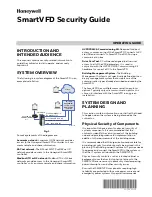
HPL
HPR
LEFT
DAC
RIGHT
DAC
LEFT
HEADPHONE
AMP
RIGHT
HEADPHONE
AMP
INL
INR
Page 1 / Register 12
Page 1 / Register 13
D3
D2
D3
D2
Left
DAC
+
+
Right
DAC
-6...+29dB
1dB steps
-6...+29dB
1dB steps
HPL
HPR
INL
INR
Analog Audio I/O
Figure 2-1. Low Power Analog Bypass
2.2.2 Headphone Output
The stereo headphone drivers on pins HPL and HPR can drive loads with impedances down to 16
Ω
in
single-ended AC-coupled headphone configurations, or loads down to 32
Ω
in differential mode, where a
speaker is connected between HPL and HPR. In single-ended drive configuration these drivers can drive
up to 15mW power into each headphone channel while operating from 1.8V analog supplies. While
running from the AVdd supply, the output common-mode of the headphone driver is set by the common-
mode setting of analog inputs to allow maximum utilization of the analog supply range while
simultaneously providing a higher output-voltage swing. In cases when higher output-voltage swing is
required, the headphone amplifiers can run directly from the higher supply voltage on LDOIN input (up to
3.6V). To use the higher supply voltage for higher output signal swing, the output common-mode can be
adjusted to either 1.25V, 1.5V or 1.65V. When the common-mode voltage is configured at 1.65V and
LDOIN supply is 3.3V, the headphones can each deliver up to 40mW power into a 16
Ω
load.
The headphone drivers are capable of driving a mixed combination of DAC signal and bypass from analog
input INL and INR. The analog input signals can be attenuated up to 72dB before routing. The level of the
DAC signal can be controlled using the digital volume control of the DAC. To control the output-voltage
swing of headphone drivers, the digital volume control provides a range of –6.0dB to +29.0dB
(1)
in steps
of 1dB. These level controls are not meant to be used as dynamic volume control, but more to set output
levels during initial device configuration. Refer to for recommendations for using headphone volume
control for achieving 0dB gain through the DAC channel with various configurations.
2.2.2.1
Stereo Single Ended Configuration
Figure 2-2. Stereo Headphone Configuration
(1)
If the device must be placed into 'mute' from the –6.0dB setting, set the device at a gain of –5.0dB first, then place the device into mute.
16
TLV320DAC3203 Application
SLAU434 – May 2012
Copyright © 2012, Texas Instruments Incorporated
















































